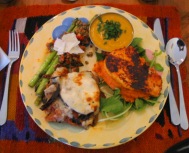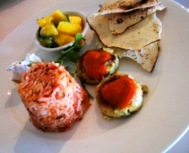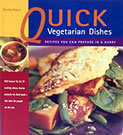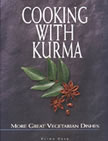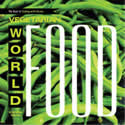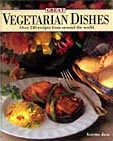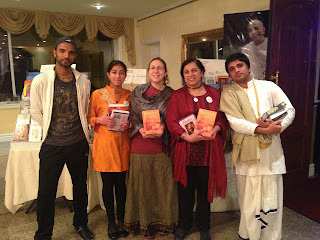Глава 4
Я сидел в своей комнате в здании храма столицы Македонии Скопье, принимал прасадам и слушал бхаджан, который пели преданные на нижнем этаже храма.
– Какой нектарный бхаджан, – сказал я преданному, – и идет уже несколько часов.
– Да, Махараджа, – ответил он. – Македоняне очень музыкальны. Мы любим петь и играть на музыкальных инструментах. У нас здесь даже есть свой тип тамбуры, с четырьмя струнами. Преданные часто используют ее в бхаджанах.
Спустя два часа мы с группой из двадцати человек выехали на площадь в центре города. Площадь, отреставрированная за последние годы, – популярное место отдыха жителей Скопье, которые собираются здесь теплыми летними вечерами, общаются и закусывают в расположенных поблизости ресторанчиках. Когда мы подъезжали к площади, я увидел огромную статую Александра Великого.
– Очень впечатляющая статуя, – сказал я преданному.
– Да, – откликнулся он. – Александр родился в Македонии и отсюда отправился завоевывать мир. Он выстроил огромную империю, но она оказалась слишком большой, чтоб с ней управляться, и он так и не смог вернуться домой.
Во время путешествий я читаю «Дневники Тамала Кришны Госвами», и как раз сегодня утром мне попался отрывок, в котором Госвами цитировал высказывание Шрилы Прабхупады о том же самом, так что я подтвердил:
– Так оно и есть, Шрила Прабхупада говорил, что Александр Македонский не смог поддерживать свою обширную империю. Вот его слова: «Представьте, если бы я покорил Бомбей, а потом Карачи, и тем временем упустил бы Бомбей. Это и случилось с Александром Великим… чрезмерная экспансия». Шрила Прабхупада говорил, что по этой причине он настаивает на важности распространения книг более, чем на открытии храмов. Он говорил: «Не делайте из меня Александра при жизни. Люди уже поняли, что я велик. Не преуменьшайте меня».
Преданный показал на другую сторону площади.
– Там еще одна достопримечательность, – сказал он, – дом матери Терезы. Она родилась здесь в 1910-м году и уехала семнадцатилетней в Индию как миссионерка. Сейчас этот дом – национальный памятник.
Мы подошли ближе, оказалось, что около здания собралась огромная толпа.
– Сегодня в Македонии отмечают годовщину ее отъезда, – сказал преданный.
– Может быть, посмотрим, пока идет бхаджан? – предложил я.
– Да, давайте войдем, – ответил он, и мы направились ко входу. – Открытый амфитеатр, в котором Вы сегодня будете давать лекцию, – часть этого мемориала. Программа рекламируется по всему городу, как «Вечер с Индрадьюмной Свами». Думаем, будет около ста пятидесяти человек.
– Приглашены ли какие-нибудь официальные лица, городские чиновники или другие важные персоны? – спросил я.
– Ну, насчет этого я не знаю, – сказал он. – В основном мы фокусируемся на своих друзьях и обычных людях. Но кто знает? Молва идет.
Мы зашли в мемориал, и я заметил несколько буклетов и брошюр о жизни матери Терезы. Я взял одну и стал читать стих, который она написала на борту, покидая Европу в 1928-м году. Читая, я был настолько тронут стихотворением, что даже решил присесть. Поистине, в нем был дух миссионерства, дух той самой жизни, которую избрал и я, приняв санньясу, отреченный образ жизни.
На прощанье
Я покидаю отчий дом
и все места родные
ради далеких берегов
тропической Бенгалии.
Я оставляю всех друзей,
отрекшись от семьи и дома,
чтоб моему Христу служить
так, как велит мне сердце.
Прощайте, матушка, –
да будет с вами всеми Бог.
Меня же Сила Свыше
в жаркую Индию призвала.
Неспешно рассекая океана
волны, плывет корабль.
Последний раз бросаю взгляд
на берега родной Европы.
На палубе стоит бесстрашно
счастливая, спокойная,
дитя довольное Христа,
Его невеста новобрачная.
В руке ее железный крестик
Спасителя распятого, –
душа ее готова принести
свою непростую жертву.
«О Господи, взгляни на эту жертву
как на признание в любви,
позволь созданью Твоему
прославить Твое Имя.
Взамен я у Тебя прошу,
о милосерднейший Отец:
позволь спасти хоть одну душу,
ту, что Тебе уже знакома».
Ясные, чистые, летней росы
ее тихие слезы текут, так
подтвердив благословеньем
ее непростую жертву.
[ Гонжа Бояджиу]
– Махараджа, – произнес преданный, возвращая меня к реальности, – нам надо идти. На площади начали бхаджан.
Мы поспешили к поющим преданным, – вокруг них уже собралась большая толпа. Это напомнило мне наши публичные киртаны в Польше в начале 90-х. Подойдя, я снова поразился красоте музыки и пения. Молча постоял несколько минут, слушая, а потом обратился к преданному около меня.
– Думаю, вы все в прошлых жизнях были гандхарвами, – сказал я. – Господь Чайтанья послал вас сюда, чтобы освободить этих людей.
И отправился к преданной, раздающей сладкий прасад из корзинки.
– Не позволите мне взять корзинку и пораздавать прасадам? – спросил я ее.
Я постепенно продвигался с корзинкой к другой стороне площади, удивляясь, что ни один человек не отказался от прасада. Звуки киртана на расстоянии становились все тише. Пожилые женщины судачили на скамейках, а их мужья за грубыми деревянными столами играли в карты. Несколько молодых пар прошли мимо, явно удивленные моим ярко-шафрановым одеянием, но все были вежливы и почтительны. Несколько раз после короткого разговора люди приглашали меня к себе домой отобедать. Одни пожилые супруги даже спросили, есть ли мне, где остановиться на ночь.
«Вот в таких местах мне нравится бывать, – думал я. – Вот где я счастлив больше всего: на улицах, распространяя сознание Кришны».
Я улыбнулся про себя, подумав, что даже выхлопы проезжающих машин вдохновляют, напоминая мне годы, что я провел, распространяя книги и проводя харинамы в городах по всему миру.
Спустя сорок пять минут за мной пришел преданный.
– Махараджа, – сказал он, – мы бы хотели, чтобы Вы провели бхаджан.
Когда мы вернулись к бхаджан-группе, я взял микрофон и произнес небольшую речь, одну из тех, что давал на улицах тысячи раз. «Я мог бы делать это вечно, – думал я, – по сути дела, это путь к бессмертию». И припомнил один из моих любимых стихов:
“На людных площадях славлю я Твою милость, что дарована даже ничтожным созданьям, и что позволила мне, низкорожденному, жить в лесу Враджа, где Твои великие преданные, исполненные чистой любви, стремятся родиться хотя бы лесной травинкой”.
[ Шрила Рупа Госвами, Уткалика-валлари, стих 65 ]
На следующее утро после исполненной блаженства программы, усиленной еще более красивыми бхаджанами, все начали готовиться к вечерней программе. Позже, когда мы ехали в город, я спросил у преданных, будет ли в амфитеатре охрана. Македония – это бывшая часть Югославии, а я помнил о тех случаях насилия, с которыми столкнулся несколькими годами ранее в Боснии и Хорватии.
– В этом нет нужды, – ответил преданный. – Обычно у нас нет проблем.
Мы приехали к восьми вечера, преданные только что начали бхаджан.
«Падшие ангелы, – думал я про себя, улыбаясь их мелодичному киртану, который наполнил и амфитеатр, и прилегающую площадь. – Не привлечься невозможно».
Вскоре весь театр под открытым небом заполнился гостями. Когда бхаджан закончился, перед аудиторией занял свое место я. Настраивая микрофон и переговариваясь с переводчиком, я вдруг заметил, что пятеро крупных хорошо одетых мужчин вошли в амфитеатр и заняли стратегические позиции.
Заметив у них мини-микрофоны и проводки, уходящие за уши, я подумал, что должно быть, это команда охраны. Посмотрев левее, к выходу с программы, я заметил человека пониже, скорее всего, начальника команды, стоящего с двумя охранниками по обе стороны от него.
«Видимо, какая-то опасность все-таки есть, – подумал я, – но преданные, наверное, решили меня не тревожить. Должно быть, наняли парней на тот случай, если все-таки что-нибудь произойдет».
Ум мой был спокоен, и я, зная, что с любыми беспорядками легко разберутся, взял Бхагавад-гиту и начал лекцию. Аудитория была внимательна и хорошо воспринимала все, что я говорил, так что я углубился в философию и даже объяснил, кто такой Кришна, что такое Его имя, слава, форма и игры.
Потом я особо отметил, что философия сознания Кришны применима и в наше время. Я процитировал Шрилу Прабхупаду, что у нас есть духовное решение материальных проблем. Люди кивали головами, соглашаясь с теми доводами, что я приводил, – особенно начальник охранной команды.
Через пролетевший незаметно час я закончил свое выступление. И смутился от шквала аплодисментов. «Я всего лишь исполняю свой долг санньяси», – сказал я переводчику.
Когда я поднялся, чтобы отправиться к столику с книгами, то заметил, что охранная команда быстро направляется к выходу.
«Почему они не остались до конца программы?» – удивился я.
Около стола с книгами было столпотворение, люди ожидали меня, чтобы подписать только что приобретенные книги. Взяв ручку, я присел, подписывая книги и оставляя по несколько вдохновляющих слов.
Внезапно ко мне подбежал запыхавшийся преданный.
– Махараджа! – выговорил он. – Правда, здорово? Просто невероятно! Даже не верится.
– А что случилось? – сказал я.
– Вы не видели? – сказал он. – Премьер-министр страны был на Вашей лекции. Пришел, как только Вы начали, и стоял у входа с двумя телохранителями по бокам. Он оставался до самого конца Вашей лекции.
– Охрану я видел, – сказал я. – Но не знал, что здесь премьер-министр. Вот уж действительно, это как глазурь на торте этого чудесного визита в Македонию.
– Есть еще и вишенка поверх глазури, – заметил преданный, широко улыбаясь.
– И что бы это могло быть? – сказал я.
– Премьер-министр сообщил через своего секретаря, что ему очень понравилась Ваша речь.
Я покачал головой. «Милость Господа Чайтаньи безгранична», – думал я.
Шрила Прабхупада пишет:
«Движение сознания Кришны распространяется по всему миру просто благодаря рассказам о Кришне. Мы издали множество книг, в том числе “Шри Чайтанья-чаритамриту” в семнадцати томах по четыреста страниц в каждом, а также “Бхагавад-гиту” и “Нектар преданности”. Мы также публикуем “Шримад-Бхагаватам” в шестидесяти томах. Где бы говорящий ни пересказывал то, что он узнал из этих книг, а аудитория слушала его, там будет хорошая, благоприятная ситуация. Поэтому члены нашего Движения, особенно санньяси, должны очень хорошо заботиться о проповеди сознания Кришны. Это создаст благоприятную атмосферу».
[ Шримад-Бхагаватам 8.1.32, комментарий ]




